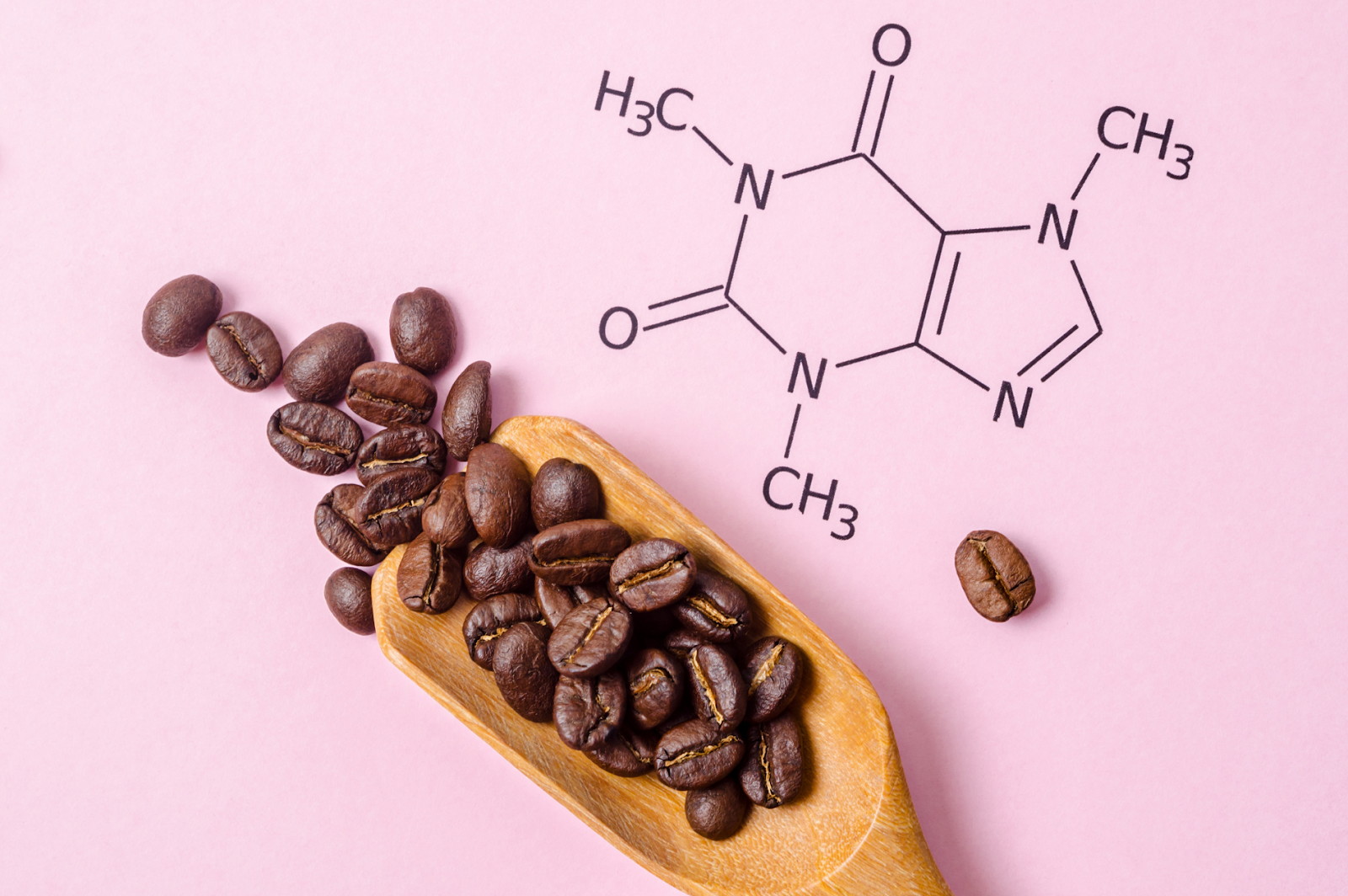Caffeine is one of the most widely consumed psychoactive substances in the world. Found naturally in coffee beans, tea leaves, cacao, and even some plants like guarana and yerba mate, it’s known for its ability to boost alertness, improve concentration, and reduce fatigue. But despite its popularity, many people don’t fully understand how it works, where it comes from, or what it does inside the body.
Whether it’s a cup of coffee to kick-start your morning or a fizzy drink during an afternoon slump, caffeine plays a big role in modern routines. Its reach extends beyond beverages – into medicine, fitness, and mental performance aids. Understanding its chemical behavior and practical implications can help us consume it more consciously.
Key Points
- Caffeine blocks adenosine receptors to reduce fatigue and boost focus.
- It’s found naturally in over 60 plant species and many consumer products.
- The body breaks caffeine into compounds that influence muscles, heart rate, and alertness.
- Short-term benefits include better cognition, energy, and physical performance.
- Moderate intake is linked to lower risk of several chronic diseases.
- Overconsumption may lead to sleep issues, anxiety, or digestive discomfort.
- Personalized tolerance varies, and some people should limit their intake.
The Science Behind Caffeine

Caffeine is a natural stimulant that belongs to a group of compounds called methylxanthines. It primarily works by blocking the effects of adenosine, a brain chemical that makes you feel sleepy. By preventing adenosine from binding to its receptors, it reduces drowsiness and helps you stay alert.
After ingestion, caffeine is quickly absorbed into the bloodstream and reaches the brain within 15 to 45 minutes. Its effects can be felt shortly after and may last for several hours, depending on a person’s metabolism, tolerance, and overall sensitivity.
Where Caffeine Is Found
Caffeine is naturally present in over 60 plant species. The most common sources include coffee, tea, cocoa, kola nuts, and guarana. It’s also added to many soft drinks, energy drinks, and certain over-the-counter medications, particularly those used for headaches, migraines, and cold relief.
A standard cup of brewed coffee contains between 80 to 100 milligrams of caffeine, while a cup of tea ranges from 30 to 50 milligrams. Energy drinks can vary significantly, often containing between 70 and 200 milligrams per serving. Chocolate and other cocoa-based products also contribute small amounts to daily intake.
How the Body Processes Caffeine
Once consumed, caffeine is metabolised in the liver and broken down into three primary compounds: paraxanthine, theobromine, and theophylline. Each has different effects on the body, such as increasing heart rate, relaxing muscles, and dilating blood vessels.
Most healthy adults can safely consume up to 400 milligrams of caffeine per day, which is roughly equivalent to four cups of coffee. However, tolerance levels vary greatly. Some individuals may feel jittery or anxious after a single serving, while others can enjoy several cups without issue.
Caffeine’s Short-Term Benefits

Caffeine is best known for its ability to improve mental performance. It can enhance focus, reaction time, memory, and general cognitive function. For athletes, it is often used as an ergogenic aid to improve endurance and physical performance. It may also help reduce perceived effort during workouts.
Other potential short-term benefits include mood enhancement, increased alertness during periods of sleep deprivation, and even mild pain relief when combined with other medications.
What Is Caffeine’s Role in Long-Term Health?
Research suggests that moderate caffeine consumption may be associated with a reduced risk of several chronic conditions, including Parkinson’s disease, Alzheimer’s, type 2 diabetes, and some forms of cancer. These effects are thought to be linked also to the other beneficial compounds found in caffeine-rich foods and beverages, such as antioxidants.
Still, too much caffeine can lead to side effects like insomnia, increased heart rate, irritability, and digestive issues. People who are pregnant, breastfeeding, or sensitive to stimulants should monitor their intake carefully and consult a healthcare professional if needed.
Signs You Might Be Overdoing It
Even if you’re not tracking milligrams, your body might be giving you hints that it’s had enough caffeine. Here are some common warning signs:
- You feel restless or anxious after your usual dose.
- You struggle to fall asleep – even after your “cut-off” time.
- You’ve built up tolerance and need more caffeine for the same effect.
- You experience withdrawal symptoms like headaches or irritability.
- You rely on caffeine multiple times a day just to feel “normal.”
If any of these sound familiar, it might be time to reevaluate your intake.
Daily Caffeine Sources Comparison
Here’s a quick reference table comparing popular caffeine sources and their average content per serving:
|
Beverage/Product |
Avg. Caffeine Content |
| Brewed Coffee (8 oz) | 80–100 mg |
| Espresso (1 oz shot) | 63 mg |
| Black Tea (8 oz) | 40–50 mg |
| Green Tea (8 oz) | 25–30 mg |
| Energy Drink (8 oz) | 70–200 mg |
| Cola (12 oz) | 30–40 mg |
| Dark Chocolate (1 oz) | 12–25 mg |
Note: Caffeine content varies by brand and preparation.
Individual Response to Caffeine ─ Why It Varies

Genetics, body weight, liver enzyme activity, age, and hormonal factors all influence how caffeine is metabolized. Some people feel wired after one cup, while others can nap after three espressos. Women on birth control or during pregnancy may metabolize it more slowly, increasing its effects. Recognizing your own sensitivity is key to safe and enjoyable consumption.
Alternatives for Caffeine-Sensitive Individuals
If caffeine leaves you jittery or sleepless, there are other ways to boost energy and focus:
- Herbal infusions like rooibos or peppermint offer a warm ritual without stimulation.
- Decaf coffee and tea retain the flavor but with minimal intake.
- Adaptogens such as ginseng and ashwagandha may promote focus without overstimulation.
- B12 or iron supplements, if deficient, can help restore natural energy.
- Cold showers or brisk walks can trigger alertness through circulation.
For those who need to reduce caffeine for medical reasons, these alternatives can help preserve routine without the side effects.
So, What is Caffeine in the Broader Sense?
Caffeine is more than just a pick-me-up. It’s a naturally occurring compound with physiological effects that influence the brain, nervous system, and even metabolism. As with many things in nutrition and health, moderation is key.
Learning more about what is caffeine can help individuals make informed choices about how much they consume and how it fits into their lifestyle.
By understanding the properties and potential benefits of caffeine, people can enjoy its positive effects while minimising any risks. Whether you use it to stay productive, enhance your workouts, or simply enjoy the ritual of your favourite drink, knowing what is caffeine and how it works allows you to use it wisely and with confidence.

